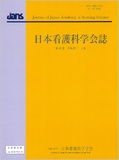Japanese
English
- 販売していません
- Abstract 文献概要
- 参考文献 Reference
要旨
目的:慢性疾患をもつ小児・思春期の子ども対象にPhoto elicitationを用いた文献を概観し,研究手法の利点と実施上の留意点を明らかにする.
方法:JBI Manual for Evidence Synthesisに則って,スコーピングレビューを行った.文献は,CINAHL,PubMed,CiNii,医中誌Webにて検索した.
結果:9編が抽出された.Photo elicitationは,病気とともに生きる子どもの経験を理解・洞察するために用いられており,子どもの記憶を刺激し鮮明にすることができる等の利点があった.9編のうち,子どもが撮影した写真を用いた文献は7編であり,撮影してほしい写真の内容や撮影枚数,撮影時の留意点等について子どもに説明をしていた.
結論:Photo elicitationは有用な研究手法であるが,肖像権やプライバシーの保護に留意が必要である.
Objective: This study aimed to analyze the literature on the use of photo elicitation in children and adolescents with chronic diseases and identify the benefits derived from using this method and considerations for its implementation.
Methods: A scoping review was conducted according to the JBI Manual for Evidence Synthesis. Databases of CINAHL, PubMed, CiNii, and Ichushi Web were searched for relevant studies.
Results: Nine studies were extracted, and photo elicitation was used to understand and gain knowledge about the experiences of children living with chronic diseases. Its advantages included stimulating and clarifying children's memories. Among the nine studies, seven used the method in which the child took the images. In this method, the researcher explained the contents of the image, number of images, and precautions to observe when taking images.
Conclusion: Photo elicitation is a useful research method; however, portrait rights and privacy must be protected.
Copyright © 2023, Japan Academy of Nursing Science. All rights reserved.


